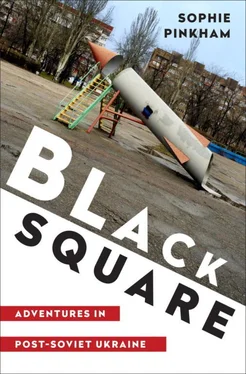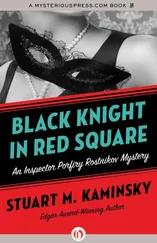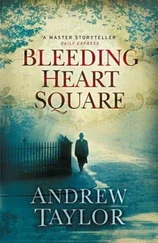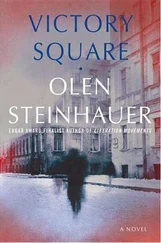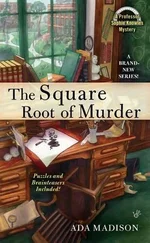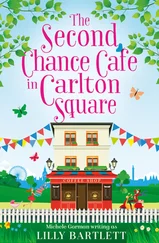Exceptional though he was, Alik was in many ways representative of his generation. Born in the mid-1970s to a bohemian mother and an alcoholic sailor-turned-KGB officer, he reached adolescence just as the world collapsed around him. As a teenager, he lived with his grandparents. They had been relatively well off, but inflation made their savings worthless, and they had to sell their belongings to survive.
Alik went to medical school, where he specialized in dermatovenerology, the treatment of diseases of the skin and sexual organs. But he couldn’t resist the call of newly open borders. He had always been fascinated by American culture and had learned good English. Now he took a break from medical school and went to Liverpool, where he learned to do a passable imitation of a Liverpool accent. (Another Ukrainian friend rode his bicycle all the way to Berlin, where he spent a few months squatting with musicians and artists.) Alik traveled through Europe; one highlight was the Amsterdam airport, where, he said, you could root through the garbage cans and find drugs jettisoned by departing tourists. He wasn’t sure whether he ought to go back to Ukraine, but he did, and finished medical school.
Kiev was exciting, full of change and opportunity, but there were also many people about Alik’s age who were dying of overdoses, or jumping off buildings, or crashing their cars, or falling into rivers, or losing their minds. Then people started to die of AIDS. Alik got a job working for an international NGO that was bringing HIV treatment to Ukraine.
• • •
THE LIFE STORY OF OSTAP, a Ukrainian man I met through Alik, is a case study of the drug-addicted children of perestroika. Ostap was from Chernigiv, in northern Ukraine. As a teenager in the mid-1990s, he tried drinking but didn’t like it. He smoked pot, but it was hard to find. Then someone offered him some opiates. At that time, an opiate brew made from poppies was available more or less everywhere, and it was extremely cheap.
As Ostap explained it to me, injecting drugs was fashionable in the 1990s. It made you seem like a criminal, and criminals had credibility: they were the only ones who were thriving. Ostap started shooting up.
After he’d been using opiates regularly for some time, he went to the seaside in Bulgaria. He didn’t understand why he wasn’t sleeping, why he was sweaty and nauseous and throwing up, why his nose was running. When he talked to his friends in Ukraine and complained about his health, they told him not to worry—he wasn’t sick, just in withdrawal.
Back in Chernigiv, Ostap often tried to quit drugs. Once, he was “coded.” This process, still popular in the post-Soviet world, is a form of “autosuggestion” that involves persuading someone that if he takes drugs or drinks again, he’ll die. Sometimes a capsule is implanted in the patient’s body; he’s told that as long as the capsule is in place, drugs will kill him.
Ostap’s parents took him for an implant, but he knew it was just gelatin.
“Where’s the guarantee?” he asked. “Let’s make a deal—you code me, and if I go and shoot up and nothing happens, give me my money back.”
The doctor refused to code him, saying he only treated alcoholics.
Ostap also spent a lot of time in the Chernigiv “nuthouse,” as he called it. He committed himself on a regular basis, usually for about two weeks. There you were put in a medically induced stupor that kept you from noticing the agonies of drug withdrawal; by the time you got out, your drug tolerance was far lower, which made it cheaper to get high. The nuthouse charged almost nothing, they’d accept you under any name, and they’d feed you three meals a day for a solid month. If a parent needed a vacation from an addicted child, sending him to the nuthouse for a few weeks was a cost-effective choice.
About 10 percent of the nuthouse beds were paid places, for addicts. According to Ostap, the addicts were always doing something stupid. They’d knock out a psychiatric patient’s tooth, take the gold crown, and trade it for moonshine, or steal all the sleeping pills in the dispensary. Once they stole the soldiers’ uniforms and boots and traded them for moonshine. In order to elicit confessions, a doctor had all the patients tied to their beds and injected with haloperidol, a powerful antipsychotic.
“How to describe haloperidol?” Ostap said. “You can’t drink—you’ll miss your mouth. Your head gets stuck when you try to turn it.” Haloperidol was used to sedate Soviet dissidents in the 1970s, when they were sent to psychiatric hospitals instead of the Gulag.
During the interrogations, the haloperidol was accompanied by a mysterious oily substance that was heated and injected into the patients’ buttocks and shoulder blades, causing a high temperature, shakes, and chills. Then the staff turned over the beds, so that the patients were hanging from their straps, facing the floor. But Ostap wasn’t resentful. He said the addicts left the doctors no choice.
The nuthouse figures prominently in artistic depictions of the post-Soviet 1990s. The Russian word nevmenyaemost comes up, too: it indicates the state of derangement in which a person can no longer be held responsible for his crimes. Such was the zeitgeist.
It took a life-threatening illness to make Ostap kick heroin. In 2002 he noticed that when he shot up in his legs, he couldn’t even feel the needle. He saw a neurologist, who prescribed ointment; he saw five more neurologists before someone did an X-ray and found that his spine was fractured. He had tuberculosis of the bone and a malignant tumor under his jaw—lymphoma. This, it was discovered, was probably because he had HIV, as well as hepatitis C, another blood-borne virus widespread among injecting drug users. The doctors knew how to treat his cancer, and he even found a surgeon willing to operate on his back, but no one knew anything about treating HIV. He got chemotherapy for six months, lost his hair, and swelled up like a balloon. He was bedridden for four months; it took him another month to stand. But he did. Like that of Pavel, the hero of How the Steel Was Tempered, Ostap’s body was almost destroyed by the hard times in which he lived; like Pavel, Ostap returned from the brink of death.
He hadn’t talked to anyone but his parents and his doctors during his treatment; all his friends were users, and he was afraid he’d relapse if he saw them. Then he got a phone call from some ex-user AIDS activists he’d met during a stint in rehab in Odessa. They asked Ostap to help open a branch of their organization in Chernigiv. He wanted to, but his parents were afraid of what would happen if their neighbors found out about his illness. So he packed his belongings into a single black plastic bag and moved to Kiev, to work with the activists.
Ostap told me that of his group of thirty or forty friends from high school, only three or four survived into their thirties. The rest died from overdoses, from injection-related diseases like sepsis, or from HIV-related illnesses like tuberculosis. Those who were still alive were in prison.
IN THE SUMMER of 2006, I attended the International AIDS Conference, the biggest health and development conference in the world. It was held in Toronto, in a conference building the size of a town, with glass walls and endless escalators. It reminded me of the interplanetary market in Star Wars : groups from every part of the galaxy moving in pods, a din of competing languages and cultures. There were sex worker activists in high ponytails and tight T-shirts with clever, obscene slogans. There were the Eastern Europeans, with their bad teeth and mullets. There were Indian hijras in bright saris, including the famous Laxmi, who’d won the admiration of Salman Rushdie, and Thai and Indonesian activists dressed warmly against the air conditioning. Most of all there were Africans, many of them in colorful outfits made of waxed cotton printed with AIDS ribbons or anti-AIDS slogans. In the “Global Village,” you could buy handicrafts like African-print handbags made by HIV-positive rape survivors in Rwanda, embroidered blouses made by HIV-positive Mexican women, colorful jewelry made by South African AIDS orphans, or, my personal favorite, a piece of African beadwork imploring DON’T SHARE NEEDLE INJECTION.
Читать дальше
